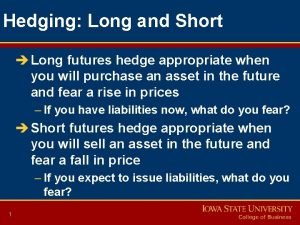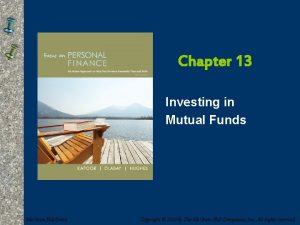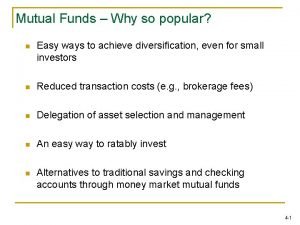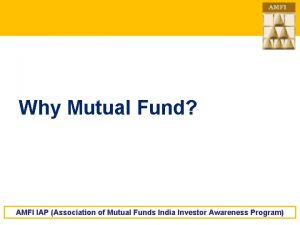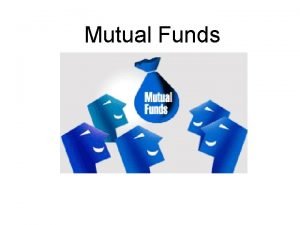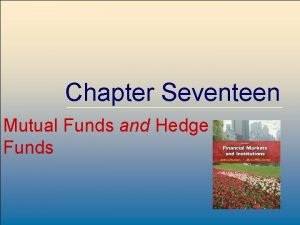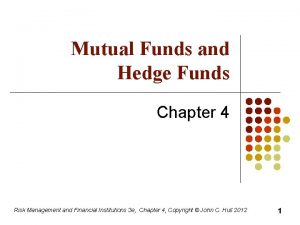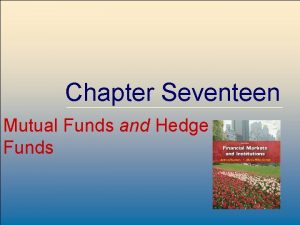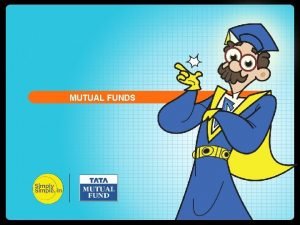Mutual Funds and Hedge Funds Chapter IV Mutual







- Slides: 7

Mutual Funds and Hedge Funds Chapter IV

Mutual Funds • One of the attractions for small investors is the diversification opportunities. • There are various kinds of mutual funds such as bonds funds, equity funds, hybrid funds, and money market funds. • An investor of mutual funds owns a certain number of shares in the fund.

Mutual Funds • The most common type of mutual funds is openended as investors buy more shares and vice versa. • Shares can be sold and purchased anytime. • Net asset value of the fund is calculated by dividing the total value of each asset in the fund by the total shares outstanding.

Mutual Funds • Unlike open-ended mutual funds in which the total number of shares outstanding goes up as investors buy more shares or vice versa, closedend funds have a fixed number of shares.

Index Fund • Some funds are designed to track a particular index such as S&P 500. • It can be done through buying all the shares in the index in amounts that reflect their weight. • Or investor could choose to a have a smaller portfolio of representative shares.

Costs • There are costs to owning mutual funds such as management expenses, sales commissions, accounting costs, transaction costs, etc. • A front-end load is a fee charged to investors at the first-time buy. • Back-end load is a fee charged to investors when selling shares.

Incentive of Hedge Fund Managers • The fee structure gives hedge fund managers to make profits and take risks. • Fund managers have a call option on the assets of the fund which increases in value as volatility rises. • Managers could increase the option’s value by taking risks that increase the funds’ volatility.
